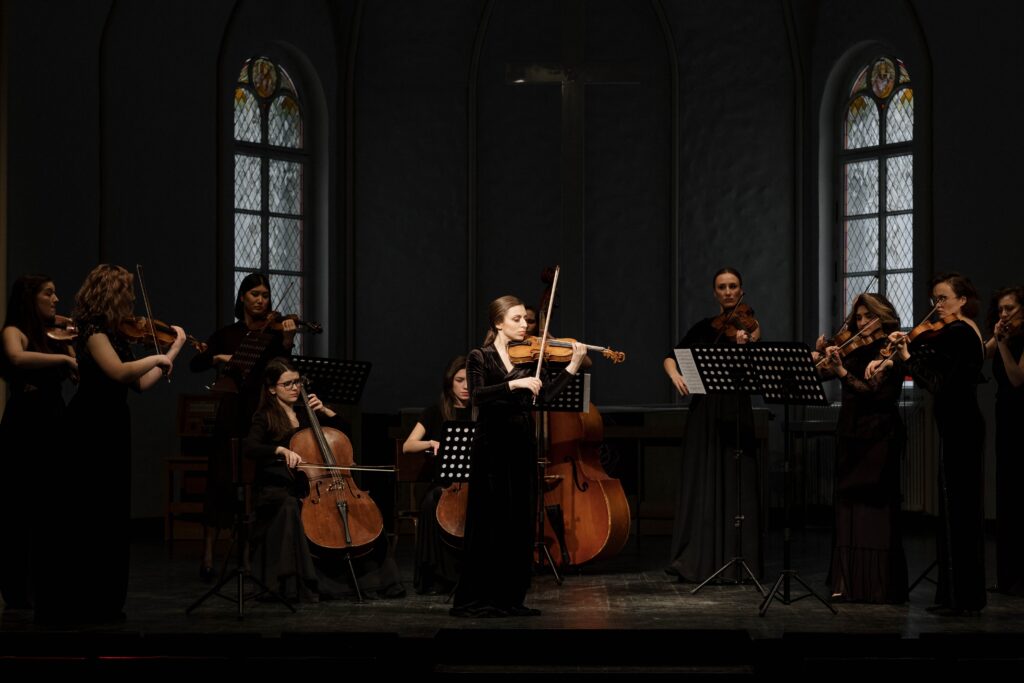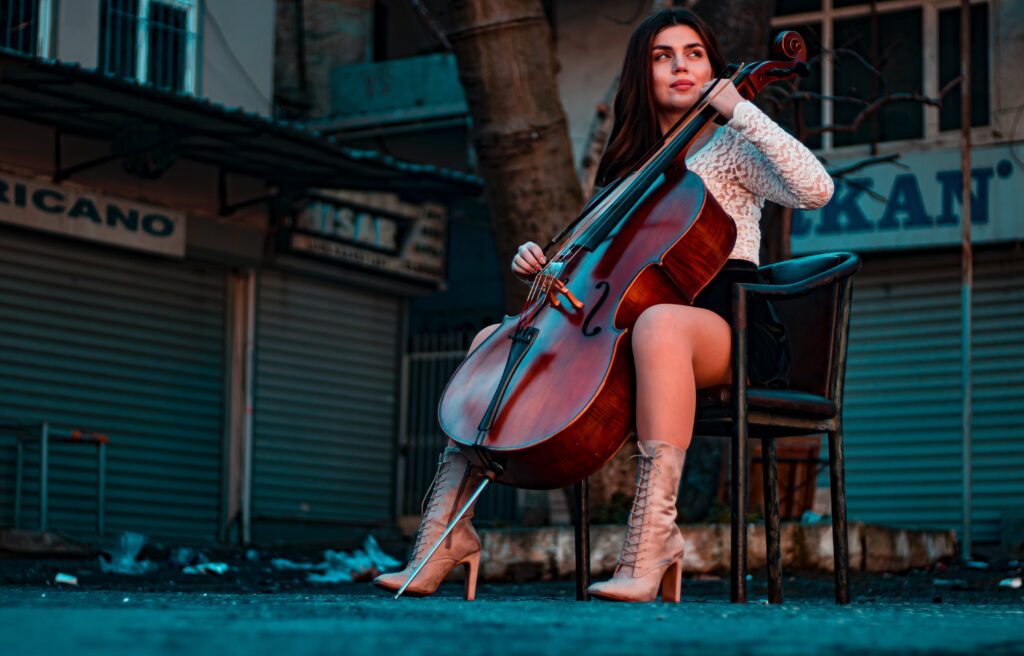Introduction
The Art of Playing music has a long history. When we listen to a timeless piece of music, we often wonder how musicians can create works that stand the test of time. Specific compositions can captivate and move us for generations, whether it's a classical symphony, a jazz improvisation, or a pop song.
How do Musicians Create Works That Last?
To clarify, The Art of Playing Music will explore the art of playing and how musicians create works that last. Furthermore, we will examine the key elements contributing to musical compositions' longevity from the initial inspiration to the final performance.
I. The Creative Process of The Art of Playing Music

Inspiration: The Spark of Creativity
Every musical composition begins with a spark of inspiration. It may come from a personal experience, an emotion, or even another music piece. Musicians draw inspiration from various sources; this initial spark sets the foundation for the creative process.
How do musicians balance innovation and tradition?
Balancing innovation and tradition is a delicate art. Musicians respect and draw inspiration from the rules of their craft while embracing new ideas and pushing the boundaries of musical expression. This balance allows them to create works rooted in the past and forward-thinking.
Composition: Writing the Musical Language
Once inspired, musicians embark on the journey of composition. This involves translating their ideas into a tangible musical language. They carefully select and arrange melodic, harmonic, and rhythmic elements to convey their intended emotions and messages. Transitions and variations are crucial in maintaining the listener's interest and creating a cohesive musical narrative.
Refinement of The Art of Playing Music
After the initial composition is complete, musicians enter the refinement phase. They meticulously analyze and refine their work, adjusting to enhance the overall impact. This process involves experimenting with different tempos, dynamics, articulations, and phrasing to create a masterful interpretation that resonates with the artist and the Audience.

Can anyone create works that last?
While creating works that stand the test of time requires talent, dedication, and a deep understanding of musical language, anyone with passion and commitment can strive to create meaningful compositions.
II. The Performance of The Art of Playing Music
Interpretation: Breathing Life into Music
The performance is where the composition truly comes alive. Musicians interpret the written notes, infusing them with their unique style and expression. They employ techniques such as rubato (tempo flexibility), dynamics, and articulation to convey the intended emotions to the Audience. Through an active voice, performers engage the listeners, inviting them on an emotional journey and creating a lasting impact.

Communication: Connecting with the Audience
A successful musical performance goes beyond technical proficiency. Musicians strive to establish a profound connection with their Audience. They aim to evoke emotions, provoke thoughts, and create a shared experience. Through their interpretation and stage presence, musicians actively engage the listeners, ensuring that the music resonates long after the performance has ended.
III. The Timeless Appeal of The Art of Playing Music
Universality: Speaking to All Generations
One of the defining characteristics of works that last is their ability to transcend time and speak to people from different generations. Musicians tap into the universal aspects of the human experience, addressing emotions and relatable themes across cultures and eras. These compositions maintain relevance and resonate with audiences throughout the ages by capturing the essence of the human condition.

Innovation: Pushing Boundaries of The Art of Playing Music
While timeless compositions possess universal qualities, they also push the boundaries of musical conventions. Musicians who strive for longevity often experiment with new forms, harmonies, and techniques, challenging existing norms and creating something fresh and innovative. These bold artistic choices capture listeners' attention and contribute to the work's enduring appeal.
Can musicians consciously create works that last, or is it a matter of luck?
Creating works that last involves conscious effort, artistic vision, and a touch of luck. Moreover, Musicians can strive to create enduring compositions by honing their skills, exploring universal themes, and pushing their creative boundaries. However, in The Art of Playing Music, external factors, such as cultural context and audience preferences influence a work's ultimate reception and longevity.
How important is collaboration in creating lasting works?
Collaboration can play a significant role in creating lasting works. Musicians often collaborate with other artists, such as composers, lyricists, or fellow performers, to bring their creative visions to life. The exchange of ideas, perspectives, and expertise can enrich the creative process, leading to the development of compositions that have a lasting impact.

What are some examples of musicians who have successfully balanced innovation and tradition in their works?
Many musicians have successfully balanced innovation and tradition in their works, creating compositions rooted in the past and forward-thinking. Here are a few notable examples:
- Ludwig van Beethoven: Beethoven is famous for bridging the gap between Classical and Romantic eras. While his early works adhere to the Classical traditions of composers like Mozart and Haydn, his later compositions pushed the boundaries of musical expression. Pieces like his Symphony No. 9 and the late piano sonatas showcase his innovative harmonies, expanded forms, and emotional intensity while maintaining a foundation in classical structures.
- Miles Davis: As a jazz trumpeter and bandleader, Miles Davis constantly pushed the boundaries of the genre. He played a pivotal role in developing cool jazz, modal jazz, and jazz fusion. Davis's landmark albums, such as "Kind of Blue" and "Bitches Brew," fused elements of traditional jazz with innovative approaches like modal improvisation and the use of electric instruments, creating groundbreaking and influential works.
- The Beatles: The Beatles revolutionized popular music by blending elements of rock and roll with diverse influences from various genres. While they drew inspiration from early rock pioneers like Chuck Berry and Little Richard, their later albums, such as "Sgt. Pepper's Lonely Hearts Club Band" and "Abbey Road," showcased their experimental and innovative approach to songwriting, incorporating elements of psychedelia, Indian classical music, and orchestral arrangements.

Some other examples
- Johann Sebastian Bach: Bach is one of the greatest composers in Western music history. His works epitomize the balance between tradition and innovation. While deeply rooted in the Baroque tradition, he expanded the possibilities of polyphony, counterpoint, and harmony. His compositions, such as the "Well-Tempered Clavier" and the "Brandenburg Concertos," demonstrate his mastery of existing forms while pushing the boundaries of musical complexity and expression.
- Radiohead: The British band Radiohead has consistently pushed the boundaries of alternative rock and experimental music. Their album "OK Computer" is hailed as a masterpiece combining traditional song structures, electronic textures, and unconventional songwriting approaches. Radiohead's willingness to embrace new technologies and experiment with sound has made them a pioneering force in contemporary music.

How have these musicians influenced the works of contemporary artists?
The musicians mentioned earlier have profoundly influenced contemporary artists, shaping the direction of music across various genres. Here are some ways in which these influential musicians have impacted the works of contemporary artists:
- Beethoven's impact on classical and orchestral music: Beethoven's innovative approach to composition, characterized by his emotional depth and expanded forms, has had a lasting impact on classical and orchestral music. Many contemporary composers continue to draw inspiration from Beethoven's exploration of harmony, structure, and dramatic expression. His influence can be heard in the works of composers such as Gustav Mahler, Dmitri Shostakovich, and John Adams, who have built upon his legacy while incorporating their distinct styles.
- Miles Davis's influence on jazz and beyond Miles Davis's groundbreaking work in jazz has left an indelible mark on the genre and beyond. His experiments with modal jazz and fusion have inspired generations of jazz musicians, who continue to explore new sonic landscapes and incorporate elements of other genres into their compositions. Contemporary artists like Kamasi Washington, Robert Glasper, and Esperanza Spalding have been influenced by Davis's bold approach to improvisation, genre-blending, and pushing the boundaries of jazz conventions.
What is the role of audience reception in determining the lasting impact of a work?
Of course, as we mentioned above in The Art of Playing Music, Music has a long history. When we listen to a timeless piece of music, we often wonder how musicians can create works that stand the test of time. Audience reception plays a crucial role in determining the lasting impact of a work. How an audience connects with and responds to a composition can contribute to its enduring popularity. A job that resonates deeply with listeners, evokes solid emotions and leaves a lasting impression is more likely to stand the test of time.

Some other examples:
To add, in The Art of Playing Music, you will explore more examples. These musicians have not only shaped their respective genres but have also influenced artists across different musical landscapes. Their groundbreaking approaches to composition, performance, and production continue to challenge contemporary musicians to push the boundaries of their artistry.
- The Beatles' impact on popular music:
The Beatles' innovative songwriting and experimentation with studio recording techniques have profoundly influenced popular music. Their incorporation of diverse musical styles, intricate harmonies, and lyrical depth inspired countless artists to explore new possibilities within pop and rock. Contemporary artists like Beck, Arctic Monkeys, and Tame Impala have been influenced by The Beatles' musical adventurousness, melodic sensibilities, and willingness to defy genre expectations. - Bach's influence:
Bach's influence on classical, jazz, and popular music: Bach's mastery of counterpoint and harmony has had a far-reaching impact across different genres. His intricate compositions continue to be studied and admired by classical musicians, providing a foundation for their works. Additionally, Bach's complex harmonic language and compositional techniques have influenced jazz musicians like Keith Jarrett and Brad Mehldau, who incorporate elements of Bach's music into their improvisations. Bach's influence can also be heard in the works of contemporary artists who blend classical and popular music, such as the pianist and composer Chilly Gonzales. - Radiohead's impact on alternative and experimental music:
Radiohead's innovative approach to songwriting and production has significantly impacted contemporary choice and experimental music. Their sonic explorations, use of electronic textures, and incorporation of unconventional song structures have inspired a new generation of artists. Bands like Arcade Fire, Alt-J, and The National have drawn from Radiohead's willingness to experiment with sound and their ability to create emotionally resonant music that defies genre boundaries.

IV. Conclusion
In conclusion, playing involves a multifaceted process that begins with inspiration and culminates in a captivating performance. Musicians create lasting works by carefully crafting compositions that speak to the human experience, refining their interpretation and performance skills, and pushing the boundaries of musical conventions.
Through their dedication, passion, and mastery of the craft, musicians leave behind musical legacies. Those effects continue to inspire and resonate with audiences for generations.
In summary, The Art of Playing Music playing involves a creative process that begins with inspiration and culminates in a captivating performance. Musicians create works that last by crafting compositions that speak to the human experience, refining their interpretation and performance skills, and pushing the boundaries of musical conventions.
With dedication, passion, and luck, musicians leave behind musical legacies that continue to inspire and resonate with audiences across generations.

FAQ
Q: Are there specific genres that produce more lasting works?
A: Lasting works can be found across various musical genres. While classical music has a rich history of enduring compositions, genres such as jazz, pop, and rock have also produced timeless pieces that continue to captivate audiences.
Q: What role does technology play in creating lasting works?
A: Technology has revolutionized the creation and dissemination of music. It provides musicians with new tools for composition, recording, and production. While technology can enhance the creative process, it is ultimately the artist's vision and talent that determine the lasting impact of their work.
Q: Can a work that initially receives little attention become a lasting masterpiece?
A: A work that initially receives little attention can become a lasting masterpiece. The reception and appreciation of a composition can change over time as new audiences discover and interpret the work. Cultural shifts, changing tastes, and evolving perspectives can contribute to reevaluating and recognizing previously overlooked positions.
Q: Can works that rely heavily on current trends and fads stand the test of time?
A: Works that heavily rely on current trends and fads may have a more limited lifespan. While they may enjoy popularity during a specific period, their appeal often fades as the trends change. However, Lasting works have a timeless quality that transcends fleeting trends, allowing them to resonate with audiences across generations.




